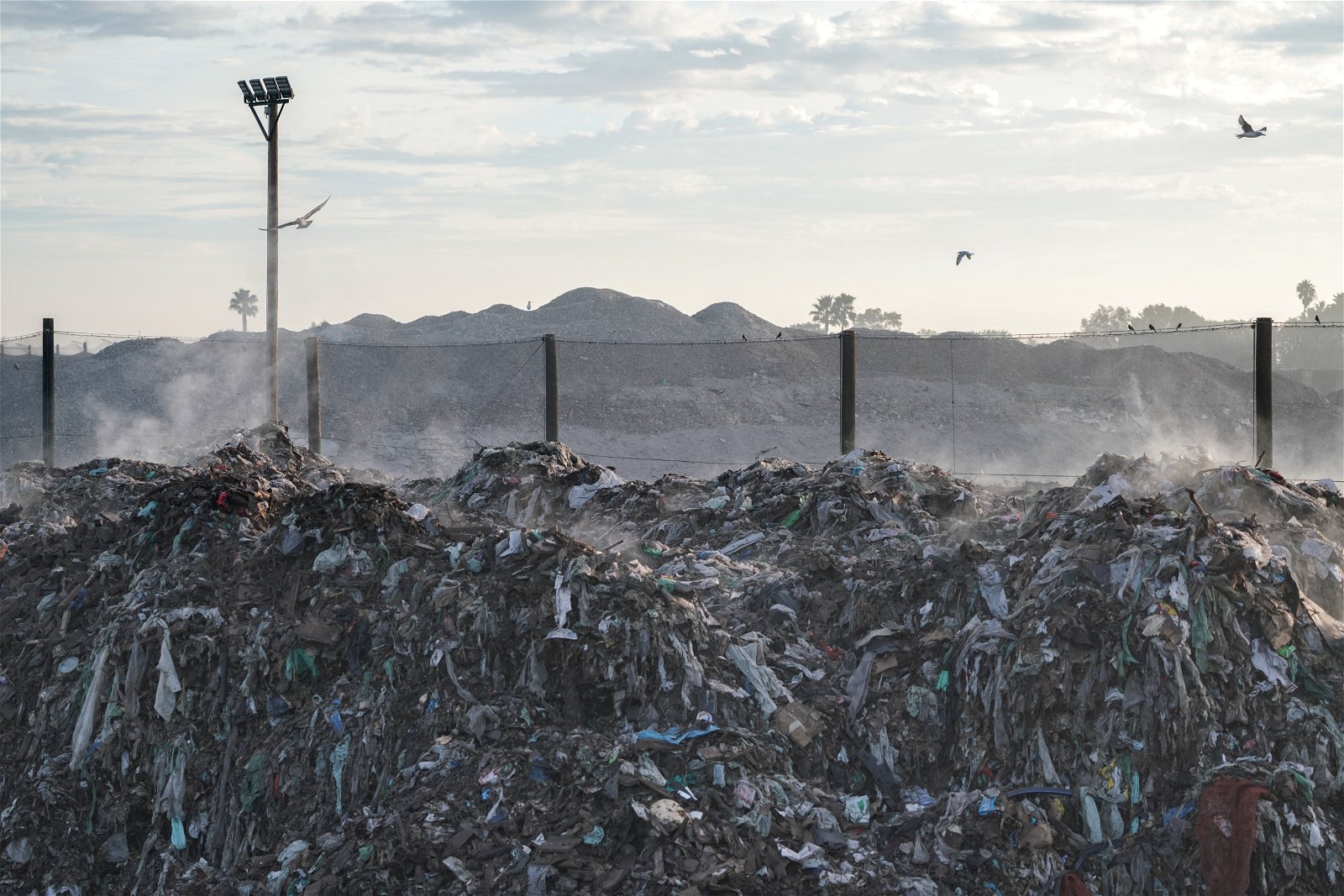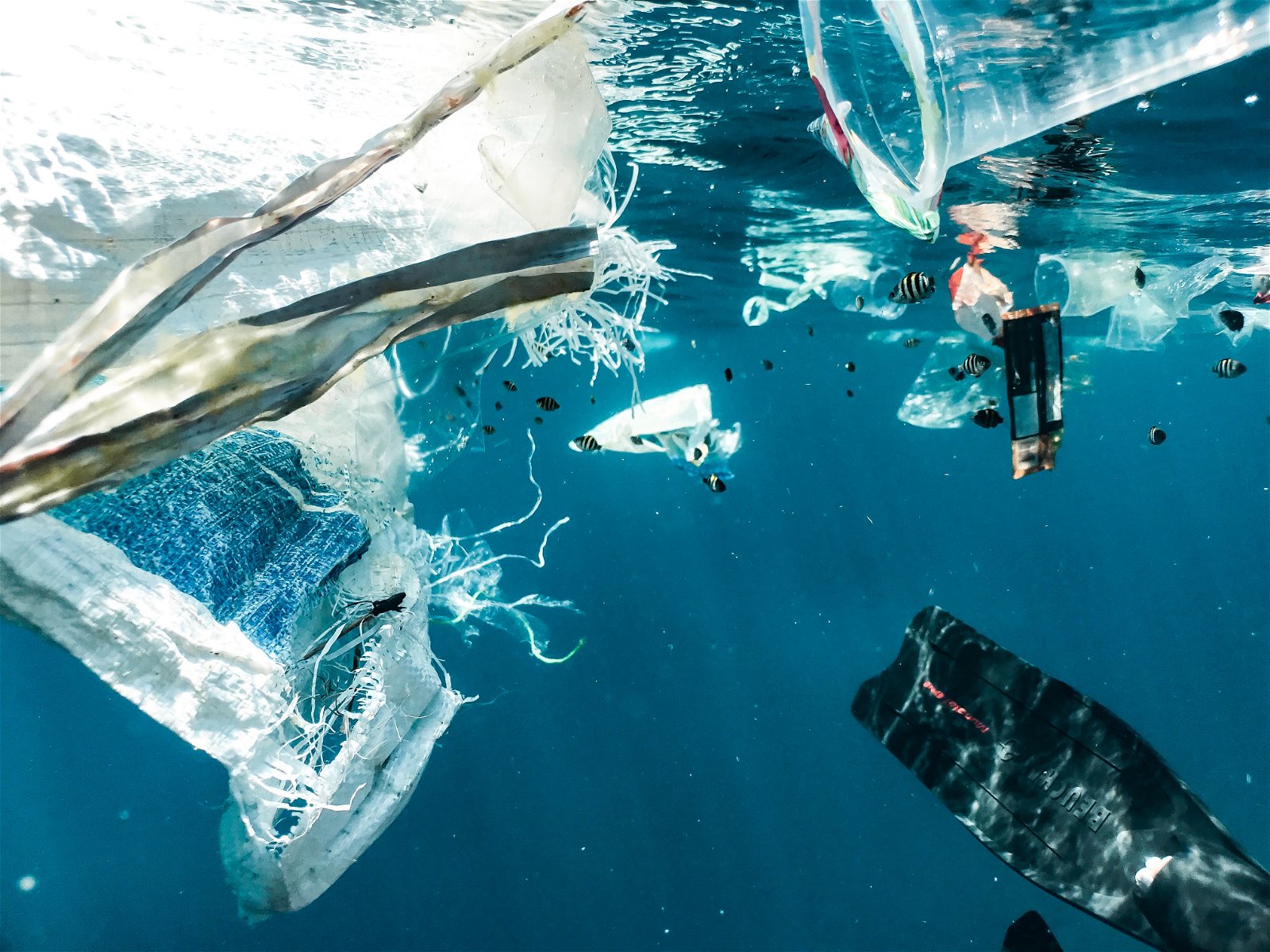Behind the seams: shocking fast fashion statistics you need to know
 Unsplash
Unsplash Unsplash
Unsplash· 14 min read
This article is part of our series to spread free & quality sustainability knowledge for all. Compare on Data Hub™ the sustainability performance of the largest apparel & fashion companies: Gucci, H&M, and Dior.
Behind the seams of the global fashion industry lies a shocking reality that many are unaware of: the massive environmental cost of fast fashion. Every year, the clothing production process generates tons of clothes-related waste, which ends up polluting our oceans and landfills. Furthermore, the fashion industry's dependence on cheap labor in other developing nations has led to poor working conditions and exploitation of workers (see sustainability performance of Patagonia, Adidas, Crocs).
The textile production and clothing production processes also consume a significant amount of energy and resources, further contributing to the industry's environmental impact. It is important to understand the staggering fashion statistics associated with fast fashion, which shed light on the urgent need for sustainable and ethical practices in the fashion industry.
In this article, we’ll explore ten alarming fast fashion statistics that might make you think twice before adding more clothes to your shopping cart.

The global fast fashion market was valued at $106 billion in 2022, and it’s projected to reach $185 billion by 2027. (Fast Fashion Market Value Forecast Worldwide 2022-2027 | Statista, 2023). The rising clothing sales are primarily attributed to the increasing consumer demand for affordable clothes among a growing youthful population.
From its impact on the environment to its effect on garment workers, here are ten reasons why we can’t turn a blind eye to the exponential growth of the fast fashion industry.

Have you ever wondered what happens to the clothes you dispose of? Unfortunately, nearly 60% of the 100 billion garments produced in 2018 ended up in landfills — according to a McKinsey study (Style That’s Sustainable: A New Fast-fashion Formula, 2016). In developing countries like Ghana and Chile, this has turned once-beautiful landscapes into sprawling eyesores.

You’ve probably heard about the usual culprits of high carbon emissions, like coal, oil, and gasoline. But did you know the global fashion industry accounts for a high percentage of greenhouse gas emissions?
According to the UN Alliance for Sustainable Fashion, the fast fashion industry is responsible for up to 8% of global carbon emissions (UN Alliance for Sustainable Fashion Addresses Damage of ‘Fast Fashion,’ 2019).

Washing clothes may seem innocuous. But every time you wash clothes made from synthetic textiles like polyester and nylon — they shed hundreds or even thousands of plastic fibers. Sadly, these plastic fibers end up in oceans, and McKinsey (see sustainability performance) estimates that they account for roughly 20-35% of ocean microplastics (The State of Fashion 2023: Holding Onto Growth as Global Clouds Gather, 2022).
Transparency is essential to reducing the effects of fast fashion on the environment and promoting sustainable fashion. Unfortunately, despite growing evidence of overproduction, 85% of the top fast fashion brands don’t reveal their annual output (Fast Fashion Transparency Index, 2022).
Fast fashion companies use a staggering 70 million barrels of crude oil to produce polyester — the world’s most popular synthetic clothing fabric (Conca, 2015a). Worse still, many polyester clothes end up in landfills, and the material can take up to two centuries to decompose.

The fast fashion industry is the second-largest consumer of clean water globally (UN Alliance for Sustainable Fashion Addresses Damage of ‘Fast Fashion,’ 2019). The industry consumes a colossal 74 trillion liters of water annually (Niinimäki, K., Peters, G., Dahlbo, H., Perry, P., Rissanen, T., & Gwilt, A. (2020). The environmental price of fast fashion. Nature Reviews Earth & Environment, 1(4), 189-200).
On average, an American household consumes about 414,500 liters of water every year (How We Use Water | US EPA, 2023). That means the fashion industry uses as much water as roughly 178 million American households annually.

Besides consuming massive quantities of water, the fast fashion industry also pollutes a lot of it. According to a McKinsey study, the fast fashion industry is responsible for 20% of industrial water pollution (The State of Fashion 2023: Holding Onto Growth as Global Clouds Gather, 2022).
Worse still, because many fast fashion companies are located in developing countries with weak regulations, the wastewater often ends up in water bodies, endangering aquatic ecosystems.
Furthermore, a paltry 11% of fast fashion brands publish their wastewater test results, compounding the issue even further (Fast Fashion Transparency Index, 2022).
Consumers dispose of tons of fast fashion garments every year. However, they aren’t the only ones culpable for the massive wastage. Similarly, fast fashion retail stores discard or incinerate tons of unsold stock instead of donating or recycling it.
According to a report by the Ellen MacArthur Foundation, these unsustainable practices result in over $500 billion in lost value every year (A New Textiles Economy: Redesigning Fashion’s Future,2017).
Many fashion companies outsource production to developing countries like Vietnam, Bangladesh, Indonesia, and the Philippines to reduce production costs. While this has been a boon for the economies of many developing countries, it has come to the detriment of many garment workers.
According to a survey by Fashion Checker, 93% of fashion brands aren’t paying their workers fairly, and many workers can’t afford essentials like decent housing, food, and healthcare (Fashion Checker: Wages and Transparency in the Garment Industry, n.d.-a).

The International Labor Organization (ILO) estimates that 170 million children are used as child labor, with fast fashion companies highlighted as one of the most notorious child exploiters (Child Labour in the Fashion Supply Chain, n.d-b.). Globally, about 51 countries use children as laborers in the garment industry, depriving many children of the right to go to school (Common Objective, 2018).
For instance, in Bangladesh, a 2015 survey by the ILO and the Bangladesh Bureau of Statistics estimated that over 3.5 million children were used for labor, with many of them working in the fashion industry (Branded Childhood: How garment brands contribute to low wages, long working hours, school dropout and child labor in Bangladesh, 2017).

Have these alarming fast fashion statistics made you want to take action to protect the environment? Well, here are three measures you can implement to promote sustainable fashion.
Fast fashion retailers sell more and more clothes every year. While you may want to keep up with the latest fast fashion trends, resist the urge to buy clothes you don’t need.
Some clothes can feel dated in a short time, and you may discard them or stop wearing them altogether. Instead of purchasing clothes you’ll only wear a couple of times, invest in timeless clothes. Also, invest in clothes suitable for various seasons rather than seasonal clothes.
Many fast fashion clothes disposed of in the trash end up in landfills, which isn’t good for the environment. Instead of throwing out your clothes in the trash, here are some sustainable alternatives worth considering:
Washing synthetic fabrics can significantly affect the environment because they shed thousands of plastic fibers that often find their way into water bodies and the soil. Fortunately, a microfiber filter can reduce the amount of plastic your clothes expel. When used correctly, some microfiber filters can capture up to 78% of plastics in wastewater from laundry (Napper et al., 2020).
The fast fashion industry is notorious for its environmental impact, which comes at a high cost in terms of waste production and carbon footprint. Brands surveyed estimate that the fashion industry consumes significant resources and contributes to around 10% of global carbon emissions.
The industry's production of fashion items, which are often considered "fashion faux pas" after a few wears, leads to high levels of textile waste. The textile sector generates an enormous amount of waste, estimated to be around 92 million tons each year. This has led to a growing "fashion revolution" movement, which advocates for more sustainable and ethical practices in the fashion industry. Consumers are encouraged to buy quality clothing, wear them for longer, and recycle or repurpose them when they are no longer needed.
By taking these steps, we can reduce the amount of waste produced by the fast fashion industry and move towards a more sustainable future.
The fast fashion industry primarily benefits fast fashion companies. Fast fashion companies can produce large quantities of clothes at a low cost, allowing them to sell their products at an affordable price while still making good profits. It has also benefited consumers by enabling them to purchase trendy clothing at pocket-friendly prices.
However, fast fashion has also had negative impacts. It has led to the exploitation of garment workers in developing countries and environmental degradation due to unsustainable practices by fast fashion companies and consumers.
Yes, Zara is a pioneer in the fast fashion industry. The veteran fashion brand produces affordable clothes incredibly fast, with new styles released every other week. Zara’s fast turnaround times from design to market allow the brand to keep up with dynamic consumer tastes — particularly among younger consumers who want to stay in vogue (see the sustainability performance of Zara).
However, like many fast fashion brands, Zara has faced severe backlash because of its environmental impact and questionable labor practices.
Fast fashion companies have become increasingly popular in recent years, offering affordable clothing to the masses. In fact, over half of the fashion industry can be classified as fast fashion. This means that the average consumer is buying and disposing of clothing more frequently than ever before. Fast fashion produces half of the total waste generated by the fashion industry, contributing to high levels of textile waste and carbon emissions.
The industry's focus on producing cheap, new clothing has led to a culture of overconsumption, where clothing is seen as disposable and easily replaceable. However, there is a growing awareness of the environmental impact of fast fashion, and consumers are becoming more conscious of their buying habits. By supporting sustainable and ethical fashion practices, we can reduce the amount of waste produced by the fashion industry and move towards a more responsible and environmentally-friendly approach to fashion.
China is the largest fast-fashion consumer, accounting for more spending on fast fashion than the next nine highest consumers. Besides China, the other top consumers of fast fashion include the United States, India, the United Kingdom, Russia, France, Germany, Italy, Japan, and Brazil. These countries account for about 75% of the clothes sold annually.
There's no panacea to solve the challenges of fast fashion. Tackling the issue will require various interventions from stakeholders like governments, companies, and consumers to address the industry's economic, social, and environmental impact.
Some feasible solutions include regulating the fast fashion industry, promoting sustainable and circular fashion, and holding brands accountable for their decisions.
The fast fashion industry is responsible for significant clothes-related waste and environmental damage. Shocking fast fashion statistics reveal that major brands, including Fashion Nova (see sustainability performance), produce a large portion of the world's fast fashion clothes.
However, the slow fashion movement is growing, encouraging consumers to choose sustainable and ethically produced garments. It is crucial to address the issues within the fashion industry's supply chains, including providing garment workers a living wage and reducing industrial waste pollution. The cheap workforce and labor costs in developing nations lead to a human cost that cannot be ignored. The carbon footprint of the industry, caused by synthetic fabrics, contributes to the climate crisis, while water pollution is also a significant concern.
The United Nations is calling for action to address these problems. Despite these issues, clothing sales doubled in the last 15 years, largely due to young women's shopping habits. It is essential to recognize the impact of our choices and push for change within the fashion industry.
illuminem's Data Hub™ tracking sustainability performance data of the largest apparel & fashion companies: Gucci, H&M, Dior, and Fashion Nova
Fast fashion market value forecast worldwide 2022-2027 | Statista. (2023, May 3). Statista. https://www.statista.com/statistics/1008241/fast-fashion-market-value-forecast-worldwide/
Style that’s sustainable: A new fast-fashion formula. (2016, October 20). McKinsey & Company. https://www.mckinsey.com/capabilities/sustainability/our-insights/style-thats-sustainable-a-new-fast-fashion-formula
UN Alliance For Sustainable Fashion addresses damage of ‘fast fashion.’ (2019). UN Environment. https://www.unep.org/news-and-stories/press-release/un-alliance-sustainable-fashion-addresses-damage-fast-fashionble-a-new-fast-fashion-formula
The State of Fashion 2023: Holding onto growth as global clouds gather. (2022, November 29). McKinsey & Company. https://www.mckinsey.com/industries/retail/our-insights/state-of-fashion
Fashion Transparency Index 2022. (2022, July 14). Issuu. https://issuu.com/fashionrevolution/docs/fti_2022
Conca, J. (2015, December 3). Making Climate Change Fashionable - The Garment Industry Takes On Global Warming. Forbes. https://www.forbes.com/sites/jamesconca/2015/12/03/making-climate-change-fashionable-the-garment-industry-takes-on-global-warming/?sh=1779fde179e4
Niinimäki, K., Peters, G., Dahlbo, H., Perry, P., Rissanen, T., & Gwilt, A. (2020). The environmental price of fast fashion. Nature Reviews Earth & Environment, 1(4), 189-200.
How We Use Water | US EPA. (2023b, April 24). US EPA. https://www.epa.gov/watersense/how-we-use-water
A New Textiles Economy: Redesigning fashion’s future. (2017). https://ellenmacarthurfoundation.org/a-new-textiles-economy
FashionChecker: wages and transparency in the garment industry. (n.d.-a). https://fashionchecker.org/
Child labor in the fashion supply chain. (n.d.-b). https://labs.theguardian.com/unicef-child-labour/
Common Objective (2018b, June 5). Child Labour in the Fashion Industry. Common Objective. https://www.commonobjective.co/article/child-labour-in-the-fashion-industry
Theuws, M., Sandjojo, V., & Vogt, E. (2017). Branded childhood: how garment brands contribute to low wages, long working hours, school dropout, and child labor in Bangladesh. Centre for Research on Multinational Corporations (SOMO)
Napper, I. E., Barrett, A., & Thompson, R. F. (2020b). The efficiency of devices intended to reduce microfibre release during clothes washing. Science of the Total Environment, 738, 140412. https://doi.org/10.1016/j.scitotenv.2020.140412
Kasper Benjamin Reimer Bjørkskov

Fashion · Sustainable Business
illuminem briefings

Fashion · Corporate Sustainability
illuminem briefings

Fashion · Corporate Sustainability
Financial Times

Greenwashing · Fashion
The Washington Post

Fashion · Climate Change
Fibre2Fashion

Carbon · Fashion